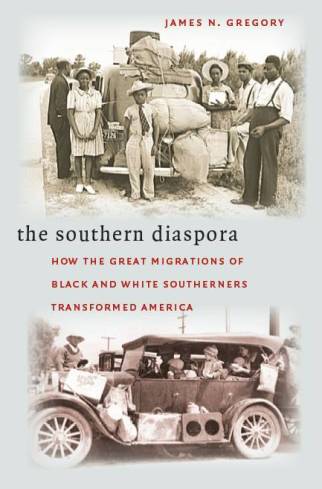|
From one perspective, church
building by the two groups of former southerners was collaborative, contributing
to a major reorganization in American religious patterns. Religious historians
locate two great trends in American religious practice in the second half of the
twentieth century. One involves a dramatically expanded pluralism of faith and
form. The other involves the resurgence of evangelicalism, the fervent,
born-again Protestantism that had seemed to be disappearing earlier in the
century. Both of these developments were partially an outgrowth of the Southern
Diaspora. Over time the two groups of migrant southerners helped change the
balance of religious forces in the regions where they settled, especially in the
great cities of the North. Once overwhelmingly Catholic, metropolitan areas
like Detroit, Chicago, Cleveland, Philadelphia and most others except New York
and Boston became increasingly Protestant as the century progressed, new kinds
of Protestant. Black southerners in the central cities and white southerners in
the surrounding suburbs spread Baptist and Pentecostal churches while making
born-again Christianity the most dynamic force in the religious mix of those
areas. Some religious scholars have called this the "southernization of American
religion."
From another perspective, the
religious energies of white and black southerners were not collaborative. Their
faiths were similar but their churches operated quite differently in the secular
world. Black church building contributed in various ways to the push for African
American empowerment. Indeed, nothing was more critical to the development of
urban African American civic life and political influence and the consequent
reorganization of race and rights. The road walked by Adam Clayton Powell Jr.
and Martin Luther King Jr. passed through the churches that black southerners
would build in the North. White migrant church building typically had nearly
opposite implications. Most of these institutions would promote various forms of
social conservatism and would help, at some moments, to move the civic culture
of white suburbs and working-class neighborhoods to the right. The road to Jerry
Falwell and the Moral Majority also passed through diaspora churches. In their
secular effects, these parallel bodies of southern origin churches were not
parallel at all.
an excerpt from Ch 6
"Gospel Highways"
|

The
Southern Diaspora: How The Great Migrations of Black and White Southerners
Transformed America
is the first historical study of the Southern Diaspora in its entirety. Between
1900 and the 1970s, twenty million southerners migrated north and west. Weaving
together for the first time the histories of these black and white migrants,
James Gregory traces their paths and experiences in a comprehensive new study
that demonstrates how this regional diaspora reshaped America by "southernizing"
communities and transforming important cultural and political institutions.
Read
the catalogue description
and advance reviews.
Read the
Preface and Introduction. |